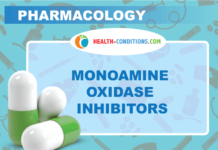HYDRALAZINE: ARTERIAL VASODILATOR
GENERAL DESCRIPTION
Hydralazine is a hydrazine derivatives and is a direct acting vasodilator. It dilates arterioles but not veins. Hydralazine is effectively used in combination therapy for severe hypertension. Hydralazine is used as a hypertensive emergency.
GENERIC NAME: Hydralazine
BRAND NAME: Apresoline
MECHANISM OF ACTION
Hydralazine is direct acting vasodilators. It is acted primarily on arterioles resistance and relaxed arterial smooth muscles tend to decrease peripheral resistance and thus lower blood pressure and afterload. It increases cardiac output, heart rate and renin secretion by producing reflex sympathomimetic action. It is used in combination with beta blockers and diuretic to reduce sympathetic action and salt and water retention. Thus, it doesn’t cause postural hypotension because of it only action on arteries not on veins.
PHARMACOKINETICS
Hydralazine is well absorbed and rapidly metabolized in the liver during first pass effect. The bioavailability is low approximately 25%. The half-life of hydralazine is 1.5 to 3 hours. It has strong binding with the vascular tissue and has longer vascular effects.
INDICATIONS
Hypertension (second-line treatment or in combination with beta blocker)
Congestive heart failure
CONTRAINDICATIONS
Tachycardia
Renal failure
Heart failure
Constrictive pericarditis
Lupus
Aortic aneurysm
Porphyria
SIDE EFFECTS & ADVERSE EFFECTS
Headache
Nausea
Anorexia
Palpitation
Sweating
Flushing
Peripheral neuropathy
Drug fever
In patient with IHD it cause
Reflex tachycardia
Angina
Ischemic arrhythmia
DRUG INTERACTION
The concomitant use of hydralazine and epinephrine may cause tachycardia.
Oral indometacin eliminate the hypotensive effects of hydralazine
Hydralazine increase the plasma levels of beta blockers but has no clinical significance.
When hydralazine is given intravenously with Diazoxide may cause severe hypotension.
Tropical minoxidil, hydralazine or nitrates absorption may increase three fold by the use of tropical tretinoin, dithranol.
NURSING INTERVENTION
Enquire the complete health history of the patient including allergy, drug interactions, and family background of hypertension.
Monitor blood pressure and pulse before and during treatment.
Check lab test for CBC, blood glucose, BUN, creatinine, platelets, electrolytes, LFT
Arterial pressure should be monitored during treatment via intra-arterial recording.
Hydralazine must be prescribed with meal.
Observe patients for possible s/s of edema or congestive heart failure.
PATIENT EDUCATION
Avoid taking alcohol while taking medicine.
Instruct the right dose and timings of medicine.
Advise patient to take hydralazine with meal.
Inform the patients about the possible side effects
Advice to take care and slow change of posture due to dizziness and danger of fall or injuries
Medicine may cause dizziness, don’t drive or perform alertness activities.
Inform patient minoxidil may cause increase in hair growths or thickness.
Report health professional immediately if dermatological adverse effects seen.
Do not breast feed while taking the medicine.
Educate patient healthy life style choice to reduce hypertension such as dietary intake of sodium and cholesterol, exercise, smoking cessation etc.













